Related Research Articles
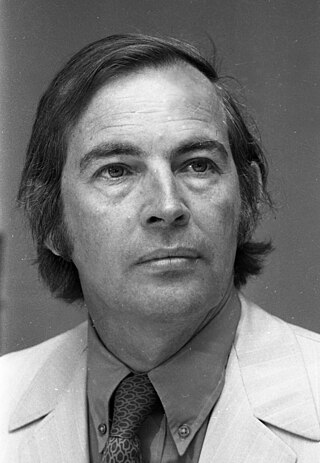
Christiaan Neethling Barnard was a South African cardiac surgeon who performed the world's first human-to-human heart transplant operation. On 3 December 1967, Barnard transplanted the heart of accident victim Denise Darvall into the chest of 54-year-old Louis Washkansky who regained full consciousness and was able to talk easily with his wife, before dying eighteen days later of pneumonia, largely brought on by the anti-rejection drugs that suppressed his immune system. Barnard had told Mr. and Mrs. Washkansky that the operation had an 80% chance of success, an assessment which has been criticised as misleading. Barnard's second transplant patient, Philip Blaiberg, whose operation was performed at the beginning of 1968, returned home from the hospital and lived for a year and a half.
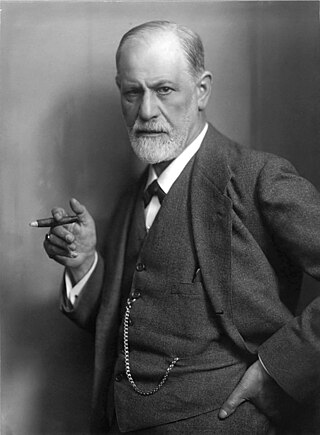
Sigmund Freud was an Austrian neurologist and the founder of psychoanalysis, a clinical method for evaluating and treating pathologies seen as originating from conflicts in the psyche, through dialogue between patient and psychoanalyst, and the distinctive theory of mind and human agency derived from it.
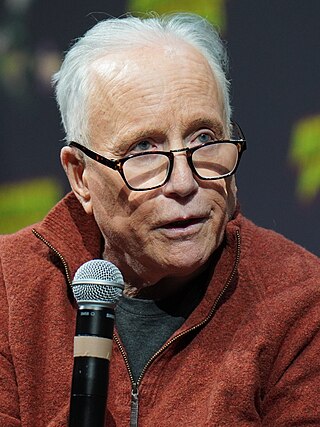
Richard Stephen Dreyfuss is an American actor. He is known for starring in popular films during the 1970s, 1980s, and 1990s, including American Graffiti (1973), Jaws (1975), Close Encounters of the Third Kind (1977), The Goodbye Girl (1977), The Competition (1980), Stand by Me (1986), Down and Out in Beverly Hills (1986), Stakeout (1987), Nuts (1987), Always (1989), What About Bob? (1991), The American President (1995), and Mr. Holland's Opus (1995).
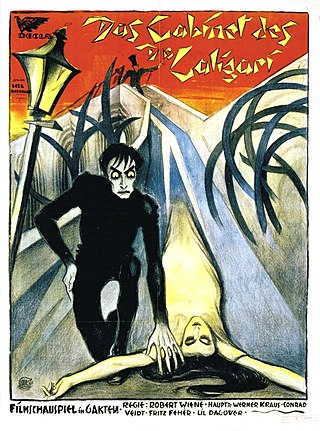
The Cabinet of Dr. Caligari is a 1920 German silent horror film directed by Robert Wiene and written by Hans Janowitz and Carl Mayer. Considered the quintessential work of German Expressionist cinema, it tells the story of an insane hypnotist who uses a brainwashed somnambulist to commit murders. The film features a dark, twisted visual style, with sharp-pointed forms, oblique, curving lines, structures and landscapes that lean and twist in unusual angles, and shadows and streaks of light painted directly onto the sets.

The Elizabeth Arkham Asylum for the Criminally Insane, commonly referred to as Arkham Asylum, is a fictional forensic psychiatric hospital appearing in American comic books published by DC Comics, commonly in stories featuring the superhero Batman. It first appeared in Batman #258, written by Dennis O'Neil with art by Irv Novick. Located in Gotham City, the asylum houses patients who are criminally insane, as well as select prisoners with unusual medical requirements that are beyond a conventional prison's ability to accommodate. Its high-profile patients are often members of Batman's rogues gallery.
Emmanuel Logroño, better known as Sunshine Logroño, is an American actor. Logroño has worked in Puerto Rican media for close to three decades.

Jeri Lynn Ryan is an American actress best known for her role as the former Borg drone Seven of Nine in Star Trek: Voyager (1997–2001), for which she was nominated four times for a Saturn Award and won in 2001. She reprised her role as Seven of Nine in Star Trek: Picard (2020–2023), for which she won another Saturn Award.
"All Happy Families..." is the 56th episode of the HBO original series The Sopranos and the fourth of the show's fifth season. Written by Toni Kalem and directed by Rodrigo García, it originally aired on March 28, 2004.

Camp Blood is a 1999 American direct-to-video slasher film, written and directed by Brad Sykes. It was followed by seven official sequels, one official spin-off entitled "Ghost of Camp Blood" and one unofficial film entitled Within the Woods. Camp Blood stars Jennifer Ritchkoff as a young woman who travels to a deserted camp with her friends, only to find themselves at the mercies of a killer clown. The film had a home video release on April 4, 2000, and was released to DVD in 2002.
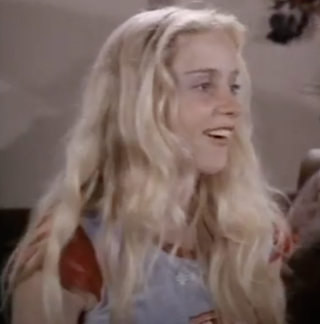
Cheryl Lynn "Rainbeaux" Smith was an American actress and musician who appeared in a number of mainstream features, as well as exploitation and horror films throughout the 1970s and 1980s. Many of these films have become cult classics.
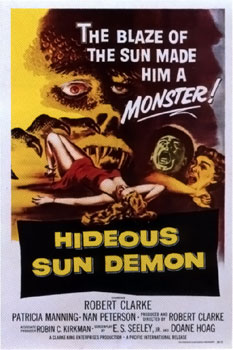
The Hideous Sun Demon is a 1958 American science fiction horror film produced, directed, and cowritten by Robert Clarke, who also starred in the title role. It also stars Patricia Manning, Nan Peterson, Patrick Whyte, and Fred La Porta. The film focuses on a scientist who is exposed to a radioactive isotope and soon finds out that it comes with horrifying consequences.
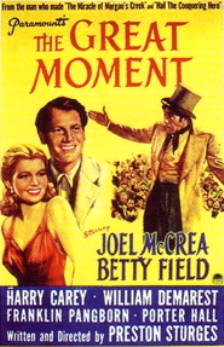
The Great Moment is a 1944 biographical film written and directed by Preston Sturges. Based on the book Triumph Over Pain (1940) by René Fülöp-Miller, it tells the story of Dr. William Thomas Green Morton, a 19th-century Boston dentist who discovered the use of ether for general anesthesia. The film stars Joel McCrea and Betty Field, and features Harry Carey, William Demarest, Franklin Pangborn and Porter Hall.

The Attic Expeditions is a 2001 horror film directed by Jeremy Kasten and starring Andras Jones and Seth Green, with appearances by Alice Cooper and Ted Raimi.
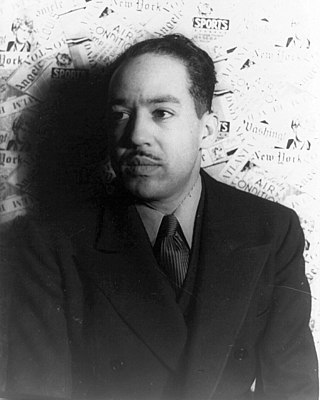
James Mercer Langston Hughes was an American poet, social activist, novelist, playwright, and columnist from Joplin, Missouri. One of the earliest innovators of the literary art form called jazz poetry, Hughes is best known as a leader of the Harlem Renaissance. He famously wrote about the period that "the Negro was in vogue", which was later paraphrased as "when Harlem was in vogue."
The Prisoner is a 17-episode British television series broadcast in the UK from 29 September 1967 to 1 February 1968. Starring and co-created by Patrick McGoohan, it combined spy fiction with elements of science fiction, allegory, and psychological drama. Since its debut, the series' enduring popularity has led to its influencing and being referenced in a range of other media, such as the film The Truman Show, and the television shows Lost and The X-Files. The producer of The X-Files called The Prisoner "the Gone with the Wind of its genre." The Guardian wrote that "Without The Prisoner, we'd never have had cryptic, mindbending TV series like Twin Peaks or Lost. It's the Citizen Kane of British TV – a programme that changed the landscape."

Oldřich Nový was a Czech film and theatre actor, director, composer, dramaturg and singer. He is considered one of the greatest actors of the Czech cinema in the first half of the 20th century.

Contagion is a 2011 American medical disaster thriller film directed by Steven Soderbergh. Its ensemble cast includes Matt Damon, Laurence Fishburne, Elliott Gould, Jude Law, Marion Cotillard, Kate Winslet, Bryan Cranston, Jennifer Ehle, Sanaa Lathan, and Gwyneth Paltrow. The plot concerns the spread of a highly contagious virus transmitted by respiratory droplets and fomites, attempts by medical researchers and public health officials to identify and contain the disease, the loss of social order as the virus turns into a worldwide pandemic, and the introduction of a vaccine to halt its spread. To follow several interacting plot lines, the film makes use of the multi-narrative "hyperlink cinema" style, popularized in several of Soderbergh's films. The film was inspired by real-life outbreaks such as the 2002–2004 SARS outbreak and the 2009 flu pandemic.

The Exorcist III is a 1990 American supernatural horror film written for the screen and directed by William Peter Blatty, based on his 1983 novel Legion. It is the third installment in The Exorcist film series, and the final installment in Blatty's "Trilogy of Faith" after The Ninth Configuration (1980). The film stars George C. Scott, Ed Flanders, Jason Miller, Scott Wilson, Nicol Williamson, and Brad Dourif.
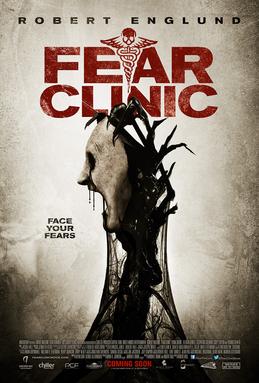
Fear Clinic is a 2014 horror film by Robert Green Hall, based upon the web series of the same name. The movie, which was partially funded through crowdsourcing, stars Robert Englund as a psychiatrist that tries to cure phobias by using extreme methods. The film received its world premiere on 22 October 2014 at the Screamfest Horror Film Festival and was released on DVD in the United States on 10 February 2015.
References
- ↑ "Hysteria (1997)". Turner Classic Movies . Retrieved January 20, 2022.
- 1 2 "Hysteria". Lexikon des internationalen Films (in German). Filmdienst. Retrieved January 20, 2022.
- ↑ Foster, Tyler. "Hysteria (1997)". DVD Talk . Retrieved January 20, 2022.
- ↑ O'Neill, Chris. "Hysteria (1997)". Experimental Conversations.
- ↑ "Hysteria". mondo-digital.com. Retrieved January 20, 2022.
- ↑ Jane, Ian. "Hysteria". Rock! Shock! Pop! Dot Com. Archived from the original on March 8, 2019. Retrieved March 7, 2019.
- ↑ Halen, Adrian (24 November 2017). "Film Review: Hysteria (1997)". Horrornews.net. Retrieved January 20, 2022.